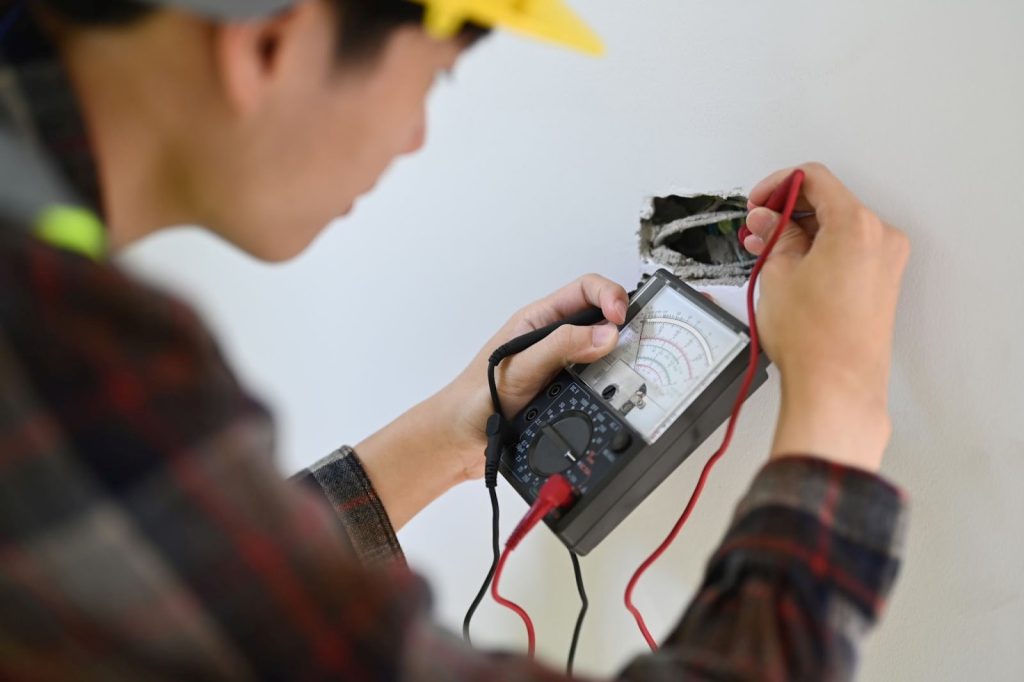When purchasing an appliance, it’s important to know whether or not it has passed government safety standards. In order to comply with these standards, manufacturers often conduct tests to ensure their products are safe. Manufacturers then mark their products as either “tested” or “not tested” in order to keep on top of whether or not they are safe to use. In this guide, we explain everything you need to know about PAT tests and PAT testing labels.
What are PAT labels?
All electrical appliances and equipment tested should be clearly identified and indicate whether testing was successfully completed or not. Use of PAT test labels is the simplest way to ensure this. These labels tell you if a test has passed or failed and also provide additional information such as the date the test was performed, the engineer’s initials and the company name or logo.
Types of PAT testing labels
Passed
If an appliance passes a PAT test, you’ll often see a “Passed PAT” label, highlighting that the appliance has undergone testing and is safe to use. These PAT test labels tend to be green, but can also come in other colors including blue, purple and black. They’re not limited to just one color so make sure you read it to double-check its status. Passed labels also mention the maker, the date the appliance was tested, and whether it needs to go through another round of testing and when.
Failed
If an appliance failed the PAT test, it will wear a failed label, which typically provides information about the failure reason and date of manufacture. A failed PAT test label should be coloured in red so that it stands out clearly against the rest of the device. The colour must match the colour of the warning symbol on the front of the machine. In addition, a failed label provides an opportunity for engineers to explain why the product was not approved by the regulatory body.
Radio frequency
Some specific appliances may need to undergo a radio frequency emissions test. An example of an appliance that could benefit from this kind of test is a microwave. These appliances can often emit radiation if they aren’t properly tested before being sold to consumers.
To ensure that these appliances pass their tests, they must display a label that says “PAT Tested” or “Radio Frequency Emissions Check.” Appliances that have successfully undergone a radio frequency emissions check will display an orange label on their packaging so that engineers can record the level of radiation emitted by the device on subsequent return visits.
Hard wearing
Some PAT tests are designed to work under tough conditions. These tests typically require a special environment, so they can be tested using a rugged tuff tag. For example, a PAT test for a battery charger may be placed inside an outer case made of sturdy material. A similar approach can be taken for testing industrial equipment. A common practice is to place the label inside a protective casing that prevents damage to the label during shipping and handling.
How often is PAT testing required for landlords?
Why is it important to label appliances after PAT testing?
It is extremely important to label appliances after PAT testing in order to indicate to users whether or not it is safe to use. Moreover, attaching a label to the appliance ensures you have all the relevant information about the appliance in one place. This includes information about when it needs to be checked again, ensuring you never miss an examination and are always in line with safety standards and regulations.
What information will you find on a PAT label?
There is some information that you will find on all PAT testing label types. Professional labels include information such as the appliance ID, whether it passed or failed the test and when the test was carried out.
Appliance ID
PAT labels mark the appliance with a PAT ID. This can be a number or any other form of identification. When a workplace owns several identical machines that need to be distinguished and prevented from being used by mistake, a PAT label can help identify them and keep them safe.
Test date
Many PAT labels indicate the date on which the test was performed, including the month and year. This is helpful because it allows users to know how recently the label was updated. This helps ensure that consumers know whether or not the product is reliable enough to use. This also gives manufacturers a chance to update their products if needed.
Re-test date
It’s important to remember the latest test date of your appliance, but it’s just as important to make sure that information stays current. That’s where the re-test date comes in handy. Not only does it indicate the last time the appliance was tested, it also reminds you when to schedule the next test. Since there aren’t any legal guidelines on how often appliances should be tested, it’s best to err on the side of caution and get them tested every year.
Engineer
Many PAT labels indicate the name of the engineer who tested the product. If this is a trustworthy person within a company, they can provide a clear reassurance to the user about the quality of the product.
PAT testing services
Portable appliance testing is essential if you are a landlord or business owner, in order to keep tenants and workers safe. From office equipment to everyday household electrical equipment and appliances, you need to regularly inspect your appliances. The best way to do this is to hire a professional PAT tester.
Legionella Risk and PAT offers fully compliant PAT testing services, performed by qualified electricians. We offer both commercial and domestic PAT testing services and have the ability to complete jobs of any size. We provide customers with a full report with all the relevant information about your test as well as a PAT certification.


